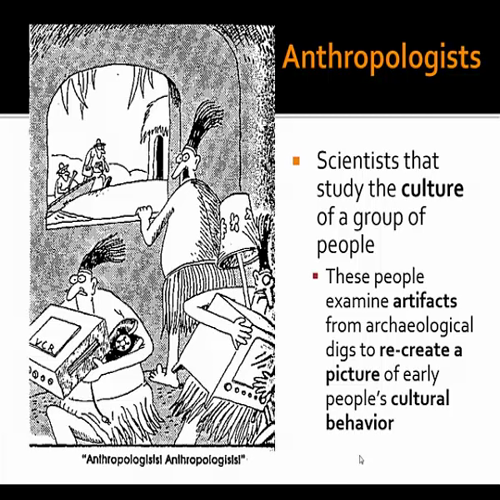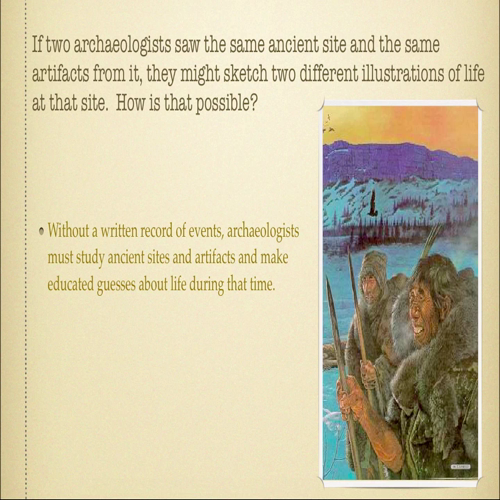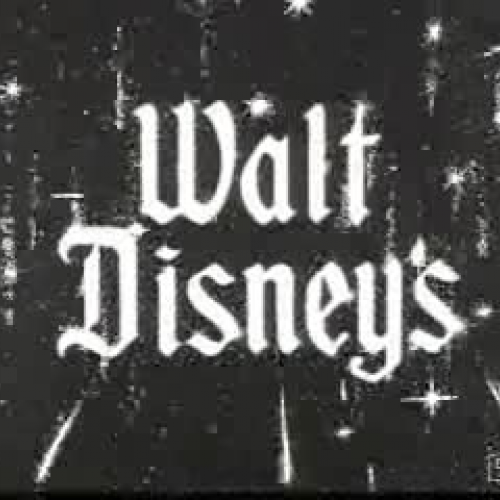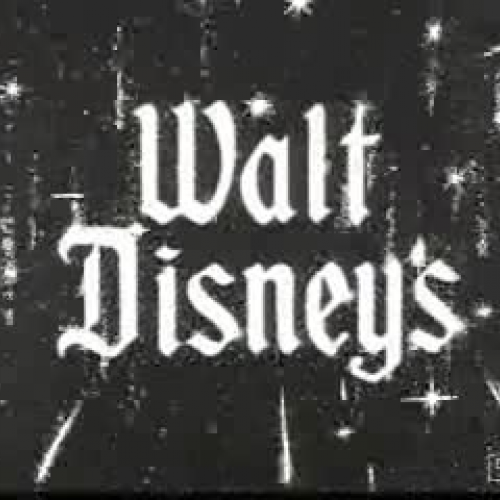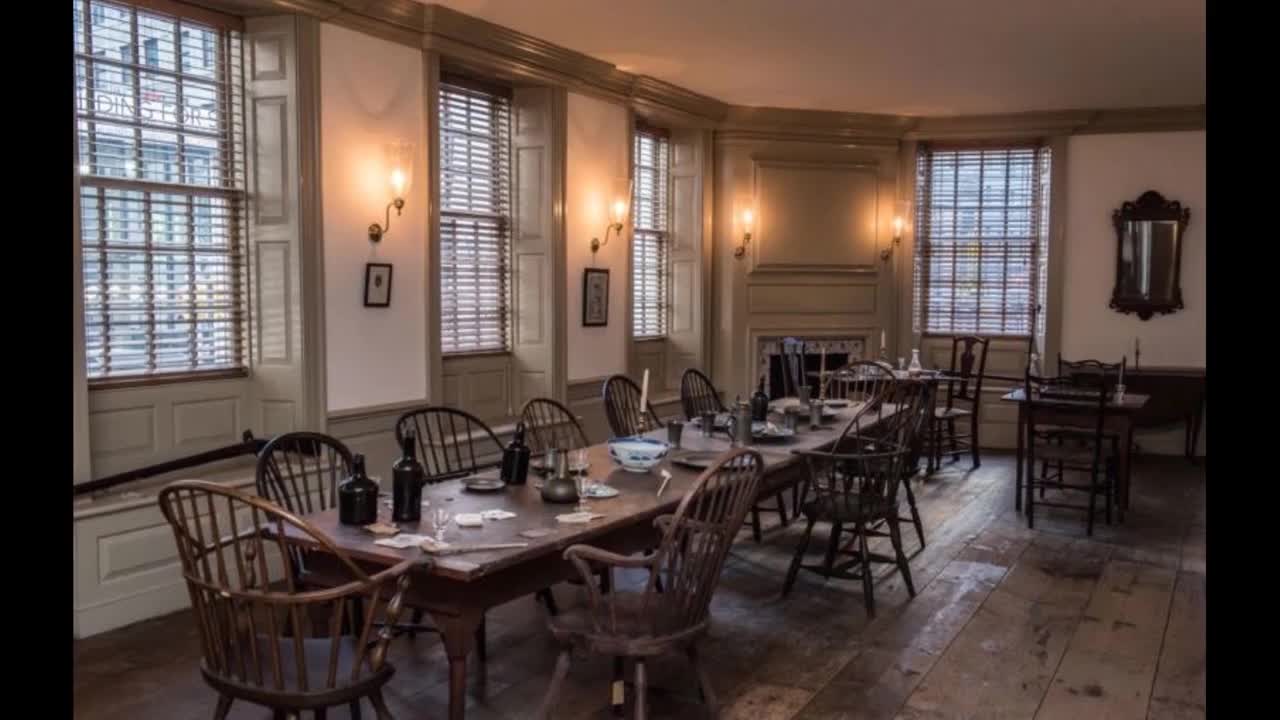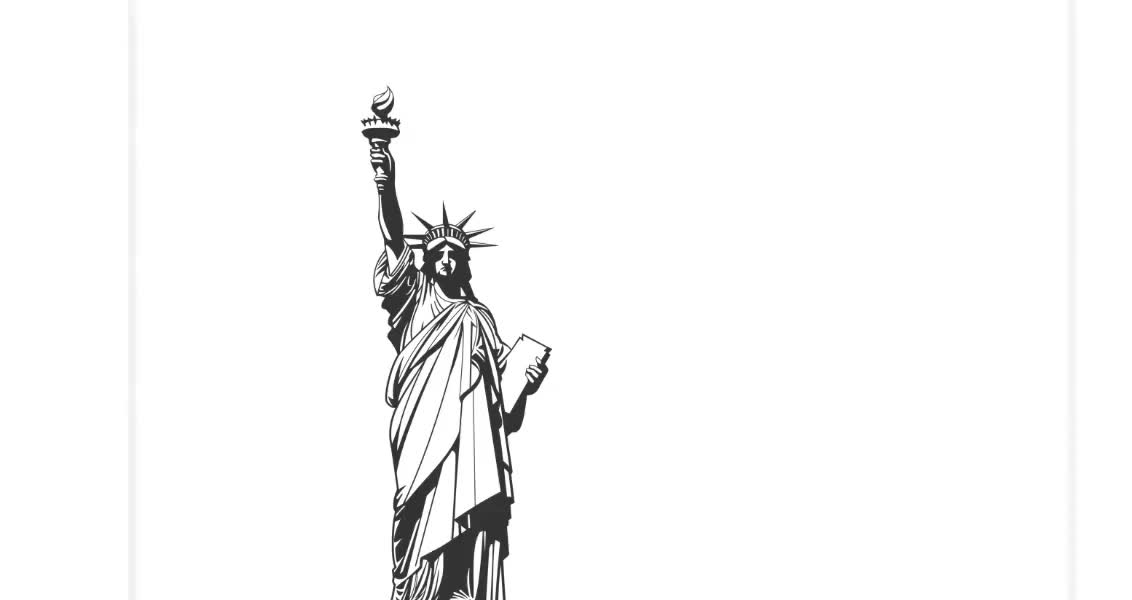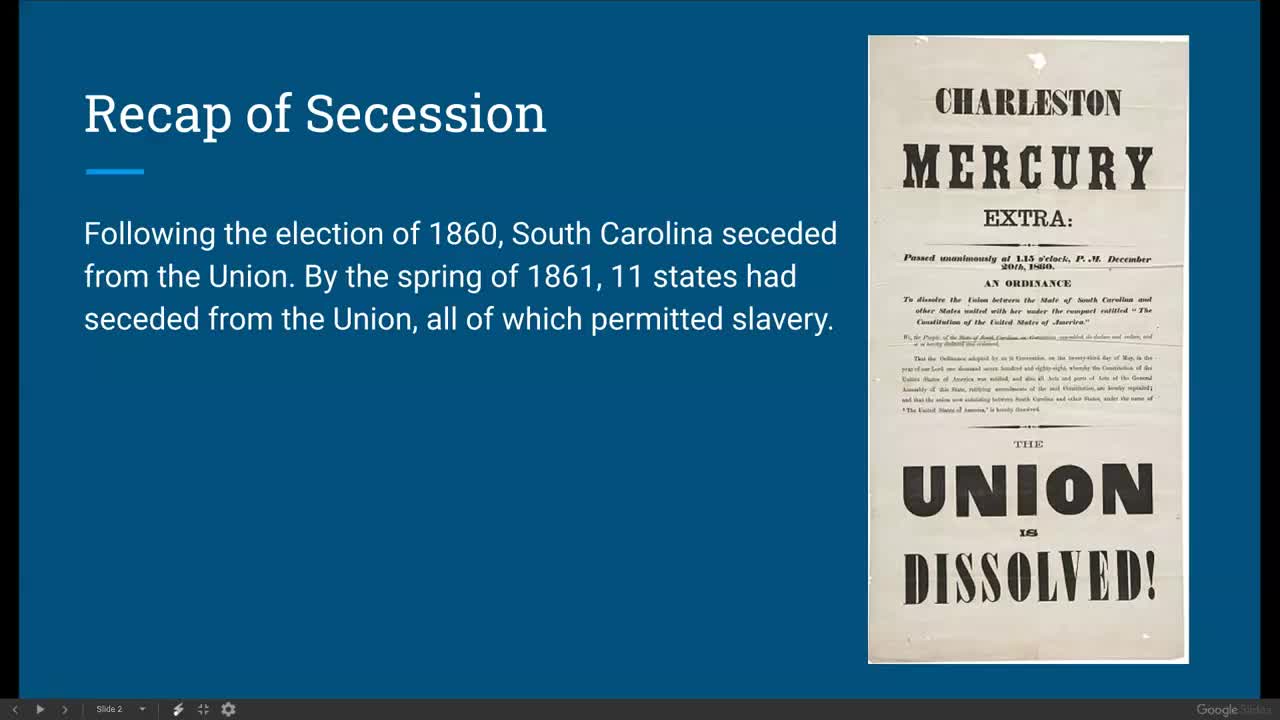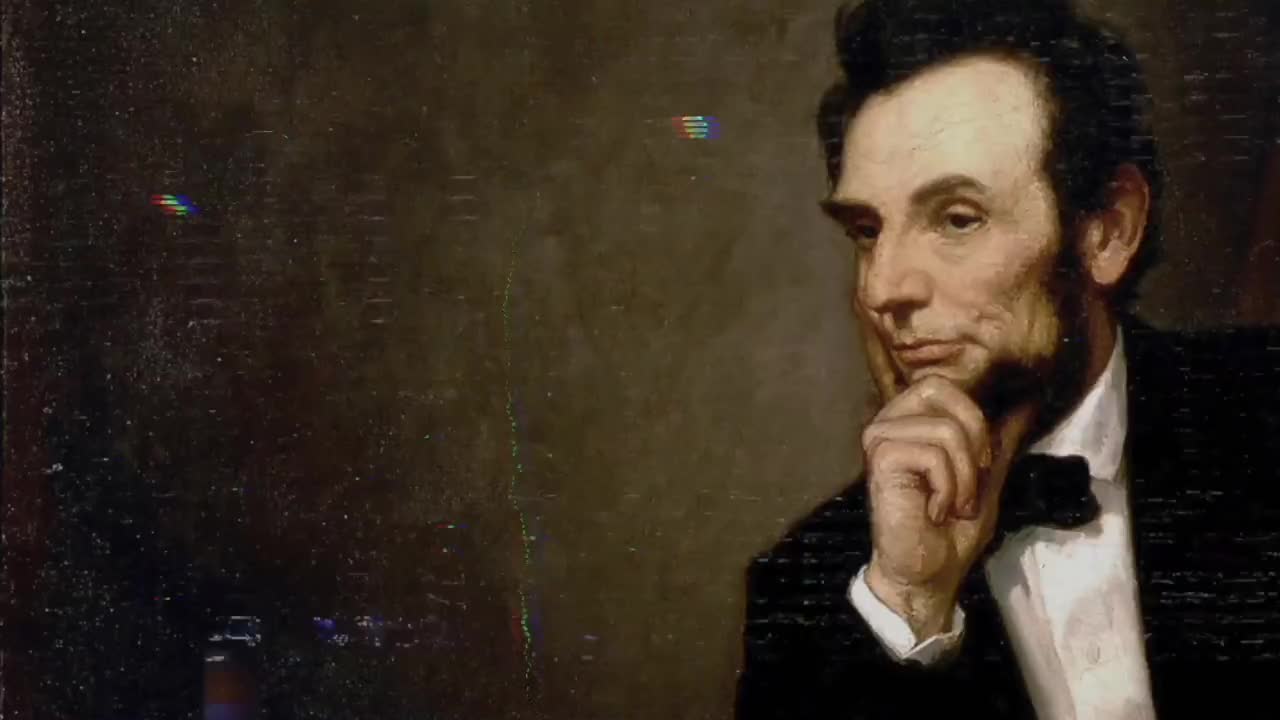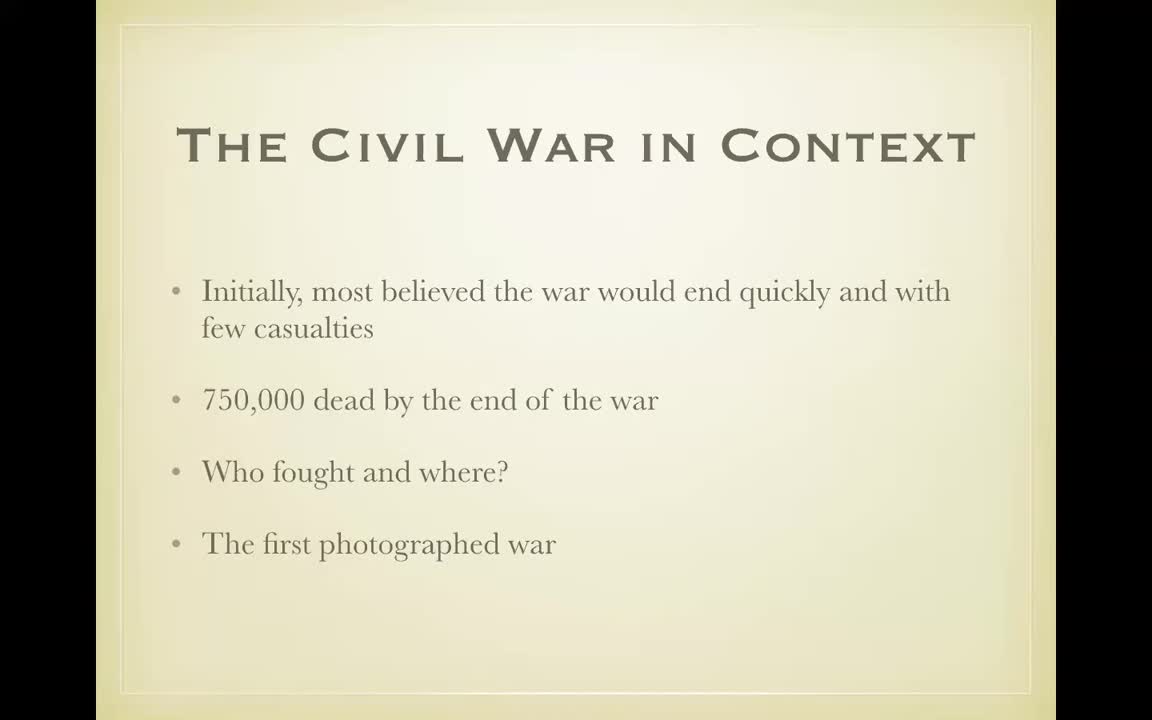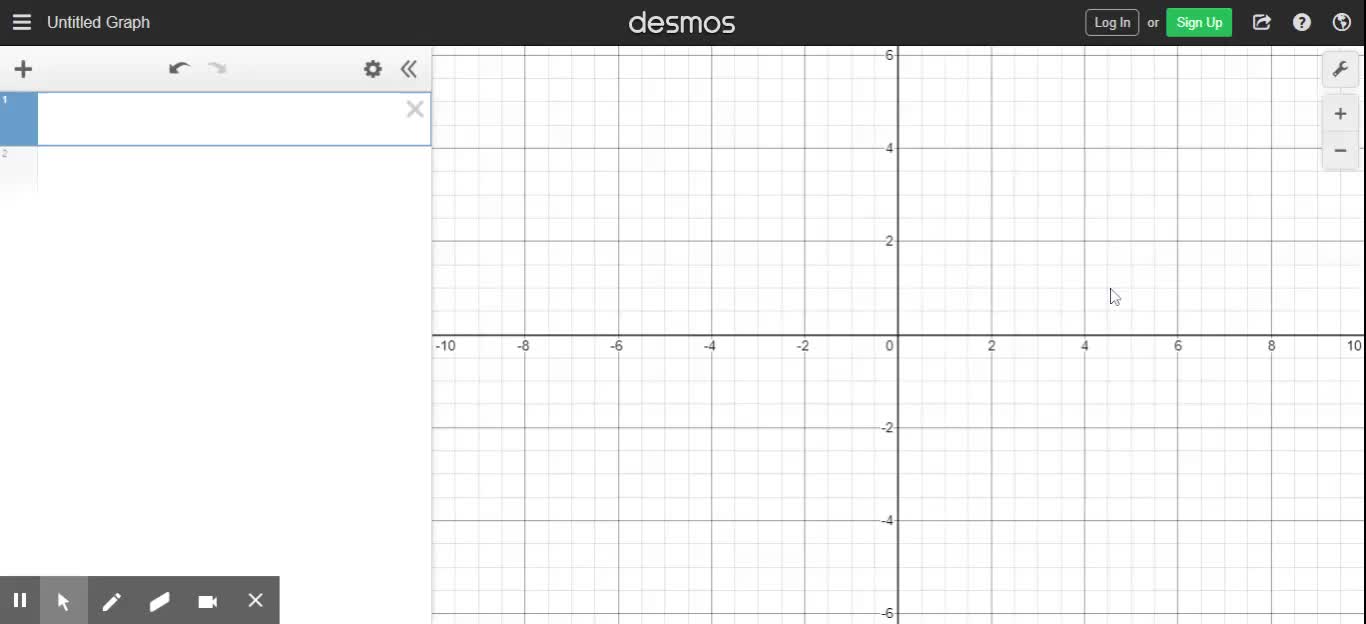c1l1-1 studying prehistory
High School / History / Pre History
Chapter one, digging up the past. Well, is that an image perhaps you had of the Stone Age? That's probably not something most cavemen or Stone Age people encountered. In lesson one, we're going to take a look at early gatherers and hunters in what we think it was probably really like. Now, we're going to be dealing with a period called prehistory. It's to history, well, before history. It's the period of time before people developed systems of writing. And it's important to get a grasp of how things look back then. You see, most of human history is actually pre history. If you look at this timeline, you'll notice that around 60,000 BC is when it's believed that what we would call modern humans started migrating out of Africa and into Europe. Humans are not believed to have even had spoken language until about 50,000 years ago. And that's represented by those little blue dot right here. If you go a little bit further down here, it's between around 40,015 thousand years ago that it's blue that humans started migrating from Asia into North America, and that would include modern day countries like Canada, United States, Mexico, and all the way down into South America. At this point, around 9 to 11,000 years ago, is actually the first time humans ever even started planting crops. And in this case, we believe it was wheat. As an aside, it's not surprising to note that humans still to this day some have trouble digesting wheat and gluten. Some people have to have a low gluten diet. And that's not surprising if you look back at the timeline that for the vast majority of human history, we didn't eat wheat. We collected berries, nuts, and hunted for meat. Way, way, way down here at the end. Is what we call recorded history. This includes the ancient mesopotamians, the Egyptians, the Romans, the Greeks, everything we think of as human history, is really just the written part and it's a tiny, tiny part of human history. So as we study through this chapter, it's important to remember that we're really going to be racing through the largest part of human history there ever has been. We race through it because, well, we don't have a lot of information about it because it's pre history. Nothing's written down. The science of study in such things is what we call archeology. It's the study of past cultures through whatever things remain behind. Now, many of us, when we think of an archeologist, and we get this picture right here. Well, what archeologists might travel. To exotic locations, this is not the life they live. An archeologist is a scientist who uncovers evidence or proof from the past. Indiana Jones, while a really cool guy, quite frankly, was a terrible archeologist. Now, when we were studying the past, what exactly are the things that are left behind? Well, we call these things artifacts. And those are objects made by people long, long ago. And they can be all kinds of things, whether it's pieces of weapons, pottery, clothing, or any other tool or part of the daily life that early humans used. And we usually find these frankly in trash bins or fire pits or in caves or places where humans often spend time. Now here's an interesting thing. Because this is pre history, and there's no real written record. If two archeologists saw the exact same ancient site in the same artifacts from it, they might sketch two very different illustrations or ideas of what life was like at that site. Well, how is that possible? Well, without a written record of events, archeologists must study ancient sites and artifacts and make the best educated scientific guesses they can about life during that time. Two very talented archeologists could come to very different conclusions about what life was like then.
